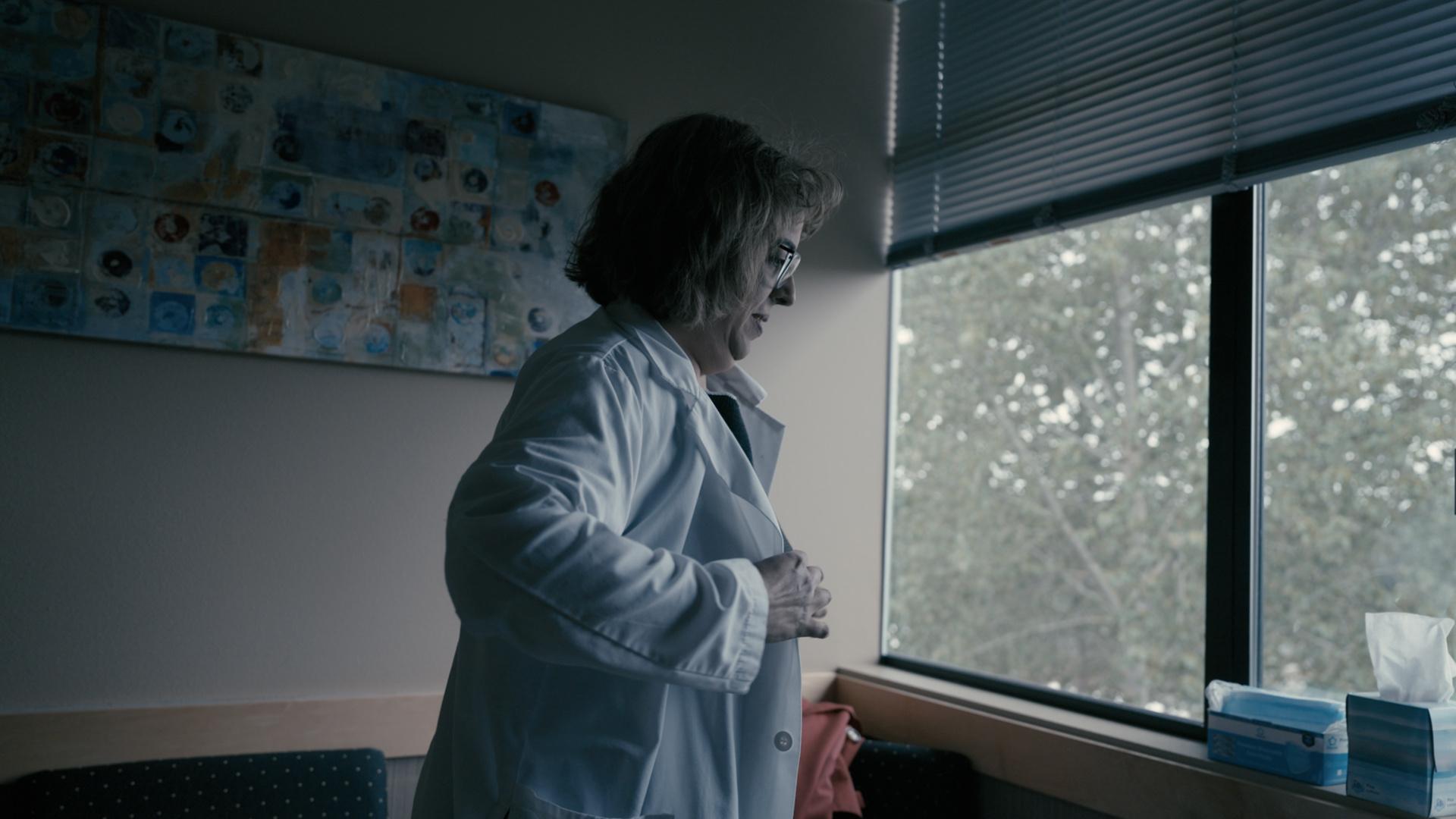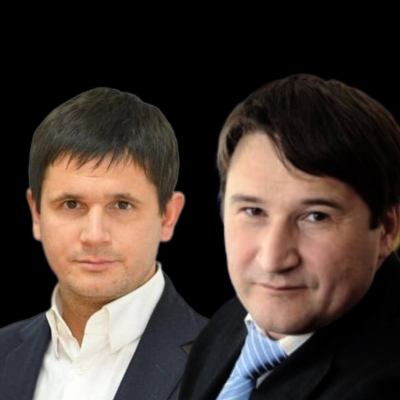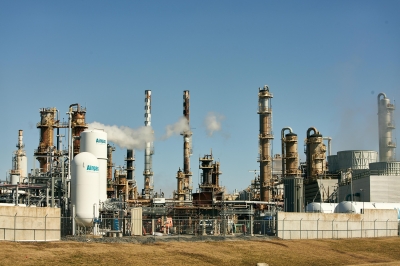Series: With Every Breath: Millions of Breathing Machines. One Dangerous Defect
Philips Respironics received thousands of complaints about a dangerous defect in its breathing machines but kept them secret for years as stock prices soared. The devices, including the popular DreamStation for sleep apnea, went to children, the elderly and veterans before the global giant announced a massive recall.
On the morning of June 14, 2021, Dr. Radhika Breaden hurried to a computer in her hushed sleep disorders clinic and tried not to panic.
The 52-year-old physician treated patients with heart conditions, cancer and neurological diseases. She cared for veterans with compromised lungs and a woman with Down syndrome. In more than a dozen years of helping people breathe through the night, she had never confronted an emergency that jeopardized nearly all of her patients at once.
Global device maker Philips Respironics was pulling its popular sleep apnea machines and ventilators off the shelves after discovering that an industrial foam built into the devices to reduce noise could release toxic particles and fumes into the masks worn by patients.
Breaden scoured the internet for details, certain that Philips had a plan to quickly ship new, safe machines to the thousands of people under her care at the Portland, Oregon, clinic. “It’s a multibillion-dollar, multinational company,” she recalled telling her staff.
But as Philips publicly pledged to send out replacements, supervisors inside the company’s headquarters near Pittsburgh were quietly racing to manage a new crisis that threatened the massive recall and posed risks to patients all over again.
Tests by independent laboratories retained by Philips had found that a different foam used by the company — material fitted inside the millions of replacement machines — was also emitting dangerous chemicals, including formaldehyde, a known carcinogen.
Though Philips has said the machines are safe, ProPublica and the Pittsburgh Post-Gazette obtained test results and other internal records that reveal for the first time how scientists working for the company grew increasingly alarmed and how infighting broke out as the new threat reached the highest levels of the Pittsburgh operation.
The findings also underscore an unchecked pattern of corporate secrecy that began long before Philips decided to use the new foam.
The company had previously failed to disclose complaints about the original foam in its profitable breathing machines, a polyester-based polyurethane material that was found to degrade in heat and humidity. Former patients and others have described hundreds of deaths and thousands of cases of cancer in government reports.
After the introduction of the new foam in 2021, this one made of silicone, the company again held back details about the problem from the public even as it sent out replacement machines with the new material to customers around the world.
One of the devices was the DreamStation 2, a newly released continuous positive airway pressure, or CPAP, machine promoted as one of the company’s primary replacements.
Federal regulators were alerted to the concern more than two years ago but said in a news release at the time that the company was carrying out additional tests on the foam and that patients should keep using their replacements until more details were available. The Food and Drug Administration has not provided new information on the test results since then, and it is still unclear whether the material is safe.
That leaves millions of people in the United States alone caught in the middle, including those with sleep apnea, which causes breathing to stop and start through the night and can lead to heart attacks, strokes and sudden death.
Philips “let me down all this time and now they’re just doing it again,” said 56-year-old retired nuclear engineer Richard Callender, who recently started using one of the replacement devices in his home near Pittsburgh.
Public health experts interviewed by ProPublica and the Post-Gazette said it’s critical that patients using the machines are told about the potential risks.
“It’s a question of providing the facts,” said Dr. Robert Steinbrook, director of the health research group at the nonprofit Public Citizen and an adjunct professor at the Yale School of Medicine. “The assumption is the new machines and the refitted ones are OK, that the foam issue has been 100% resolved. That’s not the case.”
The new foam isn’t the only problem: An internal investigation at Philips launched in the months after the recall found that water was condensing in the circuitry of the DreamStation 2, creating a new series of safety risks.
“Loss of therapy, thermal events, and shock hazards,” the investigation concluded.
The FDA issued an alert about overheating last month, warning that the devices could produce “fire, smoke, burns, and other signs of overheating” and advising patients to keep the machines away from carpet, fabric and “other flammable materials.”
Philips has said that customers could continue using the devices if they followed safety instructions.
In response to concerns about the silicone foam, the company said the material was tested against safety limits recognized by the FDA and the World Health Organization and did not emit chemicals at unsafe levels. Philips said formaldehyde, found in common household items, only becomes a risk at high exposure.
“The repaired and new replacement devices with the silicone sound abatement foam are safe,” and findings that conclude otherwise are “inaccurate,” the company said in a statement.
Philips said additional test results were submitted last year to the FDA, but the agency has not yet provided a response.
In a statement, the FDA said more tests are needed on the foam before determining if the devices pose “risks to patients.”
Experts who reviewed the test results for the news organizations said the findings revealed troubling markers, including the presence of formaldehyde at levels that exceed safety thresholds established by multiple organizations. Thresholds vary, they said, and those cited by Philips allow for far higher formaldehyde levels than others.
Safety thresholds also do not take into account patients who are already suffering from chronic illnesses and breathing from devices that emit fumes directly into the lungs.
The experts said that one of the most vexing concerns is that formaldehyde — linked to respiratory problems and certain cancers — showed up in multiple tests and at varying levels, at times low and at others higher.
“Who knows what a patient could be exposed to?” said an engineer familiar with the testing who still works in the industry and did not want to be identified for fear of reprisals. “If you had grenades and you’re not sure where they’re going to go off, that’s a problem.”
After questions from ProPublica and the Post-Gazette — and more than two years after the problem surfaced — the company put out a more detailed explanation about the issue late last week.
Documents related to the company’s testing have been turned over to the Department of Justice, which launched an investigation of the recall last year, according to sources familiar with the probe.
Philips has said that it is cooperating with investigators and that the company initially did not believe that complaints dating back more than a decade about the recalled machines needed to be reported. The company said it took action as soon as it learned of the significance of the problem.

Breaden, the Portland physician, said she had no idea that new problems have emerged and now worries that doctors and patients have been once again left to fend for themselves.
“There’s just a lot of things that we’re all being kept in the dark about,” she said.
“Compounds of Concern”
The trouble with the replacement machines surfaced shortly after the June 2021 recall, which sent the company’s stock prices tumbling and led to hundreds of lawsuits by Philips customers.
An FDA inspection of the firm’s manufacturing plant near Pittsburgh turned up a surprise discovery: a copy of a test that an independent lab conducted on a CPAP machine with the new foam showing results that the agency had not previously seen, public records show.
An inspector later noted in a report that the machine failed emissions testing because it produced “compounds of concern” with carcinogenic properties and that pediatric patients who use the machines could be especially vulnerable.
At the time, the FDA said it carried out a “benefit-risk assessment” and decided that until more information became available, not using the devices at all “may be more harmful to a patient’s health.”
One of the chemicals that turned up in the testing was formaldehyde, which also showed up on a second set of test results from another lab in August, records and interviews show.
That fall, the company opened an internal investigation after receiving complaints about the DreamStation 2. Engineers evaluated 97 devices and found that about 1 in 5 showed evidence of moisture and that nine had experienced “thermal events,” according to the company’s report.
Though the investigation concluded the problem could cause the machines to stop working or shock patients while in use, Philips deemed the risk “acceptable” and said “containment activities” were unnecessary, the records show.
In the months that followed, Philips forged ahead. With pressure mounting to meet the needs of customers, the company promised that everyone affected by the recall would get a replacement machine or a repaired one within a year.
At the time, hospitals and medical practices were waiting on the devices. So was the Department of Veterans Affairs, where an urgent alert in late 2021 warned that the supply of CPAPs was “critically low.”
“Warehouses are currently out,” the agency said in an internal email. “Level red.”
The wait forced some sleep apnea patients to place a dangerous bet. In suburban Pittsburgh, Callender continued to use his recalled CPAP for months. He said he couldn’t get a new one from Philips even though he had a double lung transplant in 2015 and a kidney transplant in 2021.
“I told them I was in dire need,” said Callender, a former mayor of Lower Burrell, Pennsylvania, who eventually started using an old machine that he had stashed in a bedroom closet. “Never heard back from Philips.”
Callender said he had no idea he was waiting on a machine that was fitted with a foam still under review by federal regulators.

“They failed me on so many levels,” said Callender, who received a replacement machine from Philips several weeks ago.
In the spring of 2022, as Philips continued to ship out replacements filled with the new foam, the company had a series of meetings with the FDA to discuss the ongoing testing.
Jeff Shuren, the agency’s chief regulator of medical devices, was directly involved, writing to Philips in May about test results that the company had promised but not yet delivered to the agency, according to emails obtained through a public records lawsuit filed against the FDA by ProPublica and the Post-Gazette.
“This is especially important,” Shuren emailed the company.
The records do not make clear what transpired in those meetings, but more than a year later, the FDA has continued to advise patients that the agency will provide information on the testing when it becomes available.
While the FDA was meeting with Philips, tensions flared among the company’s scientists and managers responsible for handling the crisis, interviews and internal communications show.
Philips “didn’t believe the results,” said the engineer familiar with the testing. “The Philips folks gnashed their teeth at it and they went to test more devices.”
ProPublica and the Post-Gazette obtained communications sent by a scientist at Philips who was alarmed about test results showing formaldehyde over the “threshold for safe exposure.” “FDA has the data. Are they just waiting for the final report from Philips? How is this sustainable?”
Though the chemical tends to quickly dissipate, experts say that even brief exposure at high levels can pose serious risk to patients who are already vulnerable, including infants, the elderly and others with chronic illnesses.
In June 2022, then-Philips biological safety engineer Adam Majka sent an email to several colleagues, writing, “We need to start finalizing reports where we have acceptable results and we do not expect further changes.”
One of the recipients was Denver Faulk, a senior safety engineer at Philips who was charged with helping to lead the company’s response, according to interviews and emails.
That same month, Philips put out an update saying that draft test reports on the foam had “not identified any safety issues.”
Around that time, Faulk sent an internal message about a safety threshold for formaldehyde proposed by Philips to one of the independent labs brought on by the company.
Toxicologists can assess the level of cancer risk against different thresholds used by scientists, governments and others; the same device can pass one test but fail another depending on the threshold. In his message, Faulk said the lab had accepted the benchmark proposed by Philips.
“Great news. … They are updating all of their reports accordingly,” Faulk wrote. “A big win for the team!”
In its statement, Philips said it proposed a limit used by the World Health Organization to provide a “harmonized” threshold at the company’s testing labs.
That threshold allows for far higher formaldehyde emissions than benchmarks used by other organizations, including the Environmental Protection Agency.
Neither Faulk nor Majka responded to requests for comment.
Pleas for Help
As lawmakers call on federal investigators to hold Philips accountable, Connecticut Attorney General William Tong said he wants the FDA, not the company, to oversee the testing.
“People are suffering,” said Tong, who, along with Sen. Richard Blumenthal, D-Conn., wrote to the agency last year urging aggressive enforcement against Philips. “We don’t know enough about what’s happening with the silicone to make a judgment about it and so we’re still very concerned.”
Patients say they have received little or no information about the issue. Hundreds have reported other concerns to the government, including the delivery of refurbished devices that were missing parts or had foul odors.
“Completely unusable,” one customer wrote last year. “It emitted an extremely … nauseating smell. I was so sick I got up and did not sleep the rest of the night.”
Others described long waits for their replacements. Hundreds of thousands of people were still waiting on their machines in April, nearly two years after the recall, according to the company’s website.
“I wanted to go there and throw the machine right through the window,” said David Campano, 71, a former steelworker who continued to use his recalled CPAP for months while he waited on a replacement from the sprawling Philips factory only miles from his home near Pittsburgh.

In the suburbs of Atlanta, retired elementary school teacher Debra Miller emailed Philips last year after endless rounds of automated responses as she tried to figure out when she would get a new machine.
A few days later, she said, a package arrived at her home containing the motor of a new machine, but no electrical cord, explanation or instructions for use.
“Dumped in a box,” said Miller, 70, who taught for 30 years. “I literally got … half of an old machine.”
Miller said she had no idea that the machine she was waiting on came with its own risks.

Philips said the recall required the company to reach millions of patients and was complicated by supply chain challenges. In some cases, CPAP motors were delivered without other parts to “enable the easiest and most familiar replacement option,” the company said, adding that the replacement plan for sleep apnea machines is nearly complete in the United States.
In the early days of the recall, Breaden and her team at the sleep clinic in Portland were focused only on getting new machines to the thousands of patients who used them night after night.
Just beyond a waiting room with a framed message, “Healthy people get their sleep,” Breaden said she now worries about an entirely new set of problems.

After learning about the test results on the new foam from ProPublica and the Post-Gazette, the sleep medicine doctor who had been personally using a DreamStation 2 said she needs more information from the company and the government.
“I’m prescribing air. It’s wonderful to prescribe something that has no side effects and can help with your sleep,” she said. “It’s sad not to be able to say that anymore.”
Michael Korsh of the Pittsburgh Post-Gazette and Nicole Tan, Bridgette Adu-Wadier and Susanti Sarker of the Medill Investigative Lab contributed reporting.























